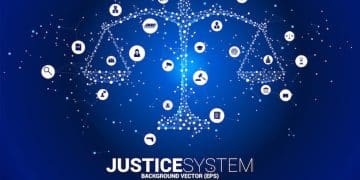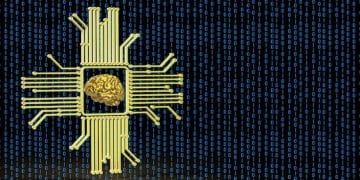The Ethics of Facial Recognition: A 2025 US Privacy Perspective
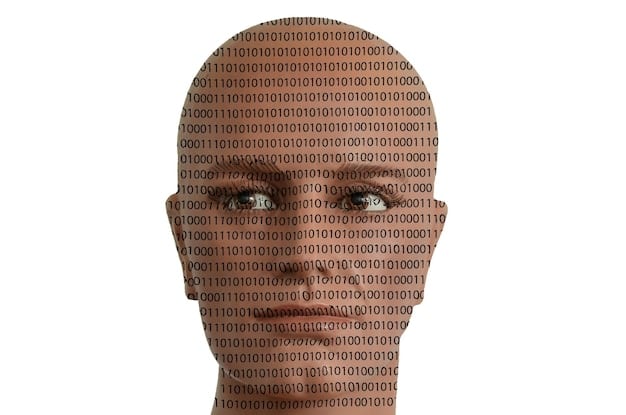
The Ethics of Facial Recognition Technology: A US Perspective on Privacy in 2025 delves into the escalating debate surrounding the use of facial recognition technology, focusing on its implications for individual privacy rights, potential biases, and the regulatory landscape in the United States, projecting the challenges and ethical considerations that will shape its deployment by 2025.
The rapid advancement and deployment of facial recognition technology have sparked intense debate, particularly concerning its impact on individual liberties. Navigating **The Ethics of Facial Recognition Technology: A US Perspective on Privacy in 2025**requires a thorough examination of the current landscape and considerations for the future.
Understanding Facial Recognition Technology
Facial recognition technology, at its core, analyzes facial features to identify or verify an individual’s identity. This technology is becoming increasingly sophisticated and pervasive in various aspects of daily life.
From unlocking smartphones to enhancing security measures, facial recognition offers both convenience and potential risks. Understanding its capabilities and limitations is crucial to addressing ethical concerns.
How Facial Recognition Works
Facial recognition systems typically follow a multi-step process. First, a camera captures an image or video of a face. Next, the system detects and analyzes the unique features of the face, such as the distance between the eyes and the shape of the nose. These features are then converted into a digital template or a “facial signature.” Finally, the system compares the facial signature to a database of known faces to find a match.
Applications of Facial Recognition
Facial recognition technology has a wide range of applications, including:
- Security: Used in airports, border control, and building access to identify individuals and prevent unauthorized entry.
- Law Enforcement: Employed by police departments to identify suspects, track individuals, and solve crimes.
- Retail: Utilized to personalize shopping experiences, prevent theft, and gather data on customer demographics.
- Healthcare: Used for patient identification, medication management, and access control to sensitive areas.
The widespread use of facial recognition technology raises significant ethical and privacy concerns, which need careful consideration and robust regulatory frameworks.
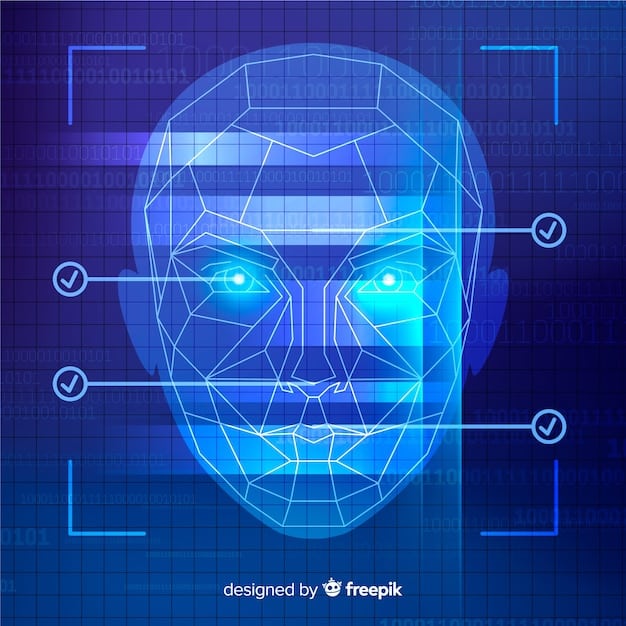
The Growing Privacy Concerns
One of the most pressing ethical issues surrounding facial recognition technology is the potential for privacy violations. The ability to identify and track individuals without their knowledge or consent raises serious concerns about surveillance and government overreach.
The collection and storage of facial data create significant risks, as these databases could be vulnerable to hacking or misuse. Ensuring robust data protection measures is essential to mitigate potential harm.
Data Collection and Storage
The mass collection of facial data, often without explicit consent, is a significant concern. Many companies and government agencies are building vast databases of facial images, which can be used to track individuals’ movements and activities.
The lack of transparency about how this data is collected, stored, and used exacerbates privacy concerns. Clear guidelines and regulations are needed to ensure that individuals are informed about the use of their facial data and have the right to control how it is used.
Potential for Surveillance
The use of facial recognition technology for surveillance purposes raises concerns about the erosion of privacy and civil liberties. The ability to track individuals’ movements in public spaces could chill free speech and assembly.
The potential for misuse of surveillance data is also a significant concern. For example, facial recognition could be used to target specific groups or individuals based on their political beliefs or other protected characteristics.
The Fourth Amendment
The Fourth Amendment of the U.S. Constitution protects individuals from unreasonable searches and seizures. The use of facial recognition technology raises questions about whether it violates this protection.
- Reasonable Expectation of Privacy: Courts have held that individuals have a reasonable expectation of privacy in their faces. The use of facial recognition technology could be considered a search under the Fourth Amendment if it violates this expectation.
- Probable Cause: Law enforcement typically needs probable cause to obtain a warrant for a search. The use of facial recognition technology without a warrant could be considered an unreasonable search.
- Balancing Interests: Courts often balance the government’s interest in using technology for law enforcement purposes against individuals’ right to privacy.
Privacy concerns necessitate comprehensive laws and regulations to protect individual rights in the face of advancing facial recognition technologies.
Bias and Discrimination in Facial Recognition
Facial recognition technology is not always accurate, and studies have shown that it can be particularly prone to bias. These biases can lead to discriminatory outcomes, particularly for people of color and those with disabilities.
Addressing bias in facial recognition is crucial to ensuring that the technology is used fairly and equitably. Algorithmic transparency and regular audits can help identify and mitigate potential biases.
Algorithmic Bias
Algorithmic bias occurs when a computer system reflects the implicit values of the humans who created the algorithm or the data used to train the system. Facial recognition algorithms can be biased due to several factors:
- Data Bias: If the data used to train the algorithm is not representative of the population, it may perform poorly on certain groups.
- Developer Bias: The values and assumptions of the developers can influence the design and implementation of the algorithm.
- Feedback Loops: Biased algorithms can perpetuate and amplify existing inequalities by reinforcing biased outcomes.
Impact on Minority Groups
Studies have shown that facial recognition technology is more likely to misidentify people of color, particularly women of color. This can lead to wrongful arrests, denials of service, and other discriminatory outcomes.
For example, law enforcement agencies have been criticized for using facial recognition technology to identify suspects in predominantly minority communities, leading to disproportionate targeting of these groups.
Mitigating Bias
Several strategies can be used to mitigate bias in facial recognition technology:
- Data Diversity: Ensuring that the data used to train the algorithm is diverse and representative of the population.
- Algorithmic Transparency: Making the algorithm more transparent so that its biases can be identified and addressed.
- Regular Audits: Conducting regular audits to evaluate the performance of the algorithm on different groups.
- Human Oversight: Requiring human oversight to prevent biased outcomes.
Addressing bias requires continuous vigilance and proactive measures to ensure fairness and accuracy in facial recognition applications.
The Legal and Regulatory Landscape
The legal and regulatory landscape surrounding facial recognition technology is still evolving in the United States. While some states and cities have enacted laws to regulate its use, there is no comprehensive federal law addressing the issue.
The lack of clear legal standards creates uncertainty and allows for inconsistent application of the technology. A comprehensive federal law is needed to establish clear rules and protect individual rights.
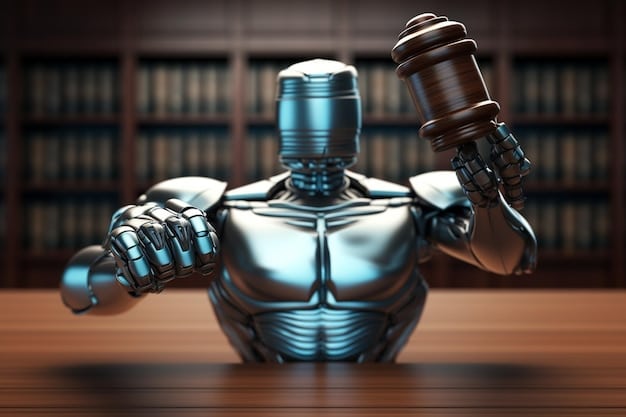
State and Local Laws
Several states and cities have taken the lead in regulating facial recognition technology. These laws typically address issues such as:
- Consent: Requiring consent before facial recognition technology can be used to identify individuals.
- Transparency: Requiring government agencies to disclose their use of facial recognition technology.
- Data Retention: Limiting the amount of time that facial data can be stored.
- Bias Audits: Requiring regular audits to identify and mitigate bias in facial recognition algorithms.
Federal Regulations
At the federal level, there is no comprehensive law regulating facial recognition technology. However, several federal agencies have issued guidance on its use. The National Institute of Standards and Technology (NIST) has developed standards for evaluating the accuracy and bias of facial recognition algorithms.
The lack of a comprehensive federal law creates uncertainty and allows for inconsistent application of the technology. A comprehensive federal law is needed to establish clear rules and protect individual rights.
The Need for Comprehensive Legislation
There is growing consensus that comprehensive legislation is needed to address the ethical and privacy concerns raised by facial recognition technology. Such legislation should include provisions for:
- Data Privacy: Protecting individuals’ facial data from misuse and unauthorized access.
- Transparency: Requiring government agencies and companies to be transparent about their use of facial recognition technology.
- Accountability: Holding government agencies and companies accountable for biased or discriminatory outcomes.
Establishing a clear and comprehensive legal framework is essential to balance innovation with the protection of individual rights and prevent potential abuses of the technology.
The Future of Facial Recognition in 2025
Looking ahead to 2025, facial recognition technology is likely to become even more sophisticated and pervasive. Advancements in artificial intelligence and machine learning will improve the accuracy and efficiency of facial recognition algorithms.
Understanding these emerging trends is essential for policymakers, businesses, and individuals to navigate the ethical implications of this transformative technology.
Technological Advancements
Several technological advancements are expected to shape the future of facial recognition technology:
Improved Accuracy: Facial recognition algorithms are becoming more accurate, even in challenging conditions such as low light or partial occlusion.
3D Facial Recognition: 3D facial recognition technology captures the depth and contours of the face, making it more resistant to spoofing and other forms of attack.
Emotion Recognition: Emotion recognition technology analyzes facial expressions to detect emotions such as happiness, sadness, or anger.
These advancements will enable new applications of facial recognition technology, but also raise new ethical and privacy concerns.
Emerging Applications
Facial recognition technology is likely to be used in a wide range of new applications in the coming years:
- Personalized Advertising: Retailers may use facial recognition to identify customers and display personalized advertisements.
- Smart Homes: Facial recognition could be used to control access to smart homes and personalize the home environment based on the occupants’ preferences.
- Autonomous Vehicles: Facial recognition could be used to authenticate drivers and monitor their behavior.
Ethical Considerations
As facial recognition technology becomes more pervasive, it is essential to address the ethical considerations it raises. These include:
- Informed Consent: Ensuring that individuals are informed about the use of their facial data and have the right to consent to its use.
- Data Security: Implementing robust data security measures to protect facial data from misuse and unauthorized access.
- Transparency: Ensuring that government agencies and companies are transparent about their use of facial recognition technology.
Navigating the ethical landscape of facial recognition will require ongoing dialogue and collaboration among stakeholders, including policymakers, researchers, and the public.
Balancing Innovation and Privacy
The challenge of facial recognition technology lies in balancing the benefits of innovation with the need to protect individual privacy and civil liberties. Striking this balance requires a multi-faceted approach that includes:
Implementing robust regulations, promoting transparency and accountability, and empowering individuals to control their own data.
Regulatory Frameworks
Effective regulatory frameworks are essential to ensure that facial recognition technology is used responsibly and ethically. These frameworks should include provisions for:
Data Minimization: Limiting the amount of facial data that is collected and stored.
Purpose Limitation: Restricting the use of facial data to specific, legitimate purposes.
Data Security: Implementing robust data security measures to protect facial data from misuse and unauthorized access.
Promoting Transparency
Transparency is crucial to building trust in facial recognition technology. Government agencies and companies should be transparent about their use of facial recognition technology, including:
- How the technology is used: They should disclose the specific purposes for which facial recognition technology is used.
- What data is collected: They should disclose the types of facial data that are collected.
- How the data is stored: They should disclose how facial data is stored and protected.
Empowering Individuals
Individuals should have the right to control their own data, including their facial data. This includes the right to:
- Access their data: Individuals should have the right to access their facial data and correct any inaccuracies.
- Delete their data: Individuals should have the right to request that their facial data be deleted.
- Opt out of facial recognition: Individuals should have the right to opt out of facial recognition technology.
By implementing these measures, it is possible to harness the benefits of facial recognition technology while safeguarding individual rights and fostering public trust.
| Key Aspect | Brief Description |
|---|---|
| 🔒 Privacy Concerns | Addresses mass surveillance and data misuse risks. |
| ⚖️ Bias & Discrimination | Highlights algorithmic bias impact on minority groups. |
| 🏛️ Regulatory Needs | Advocates for comprehensive federal legislation. |
| 🔮 Future Trends | Examines advancements and ethical implications by 2025. |
Frequently Asked Questions
▼
The main concerns include privacy violations, potential for mass surveillance, algorithmic bias leading to discrimination, and the lack of comprehensive legal regulations to govern its use.
▼
Facial recognition technology can be biased due to biased training data, algorithmic design flaws, and feedback loops that perpetuate existing inequalities, often resulting in misidentification of minority groups.
▼
Currently, the US lacks comprehensive federal legislation. However, some states and cities have enacted laws addressing consent, transparency, data retention, and bias to regulate the technology’s use.
▼
By 2025, facial recognition is expected to see improvements in accuracy, the development of 3D facial recognition, and advancements in emotion recognition, leading to broader and more integrated applications.
▼
Balancing innovation with privacy requires robust regulatory frameworks, transparency in how the technology is used, and empowering individuals by granting them control over their facial data and the option to opt out.
Conclusion
In conclusion, the ethical implications of facial recognition technology in the United States by 2025 necessitate a careful balancing act between innovation and individual rights. Comprehensive legislation, transparency, and ongoing dialogue are essential to ensure that this powerful technology is used responsibly and ethically, protecting privacy and preventing discriminatory outcomes.

